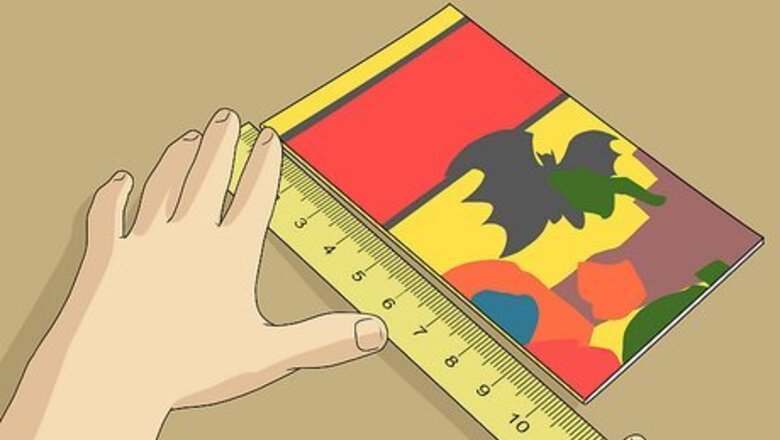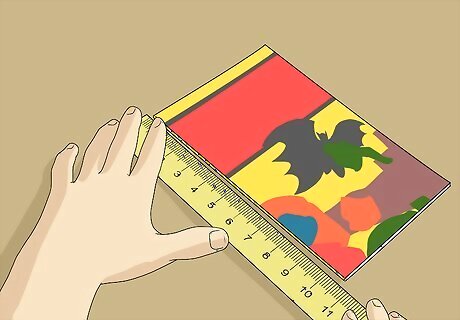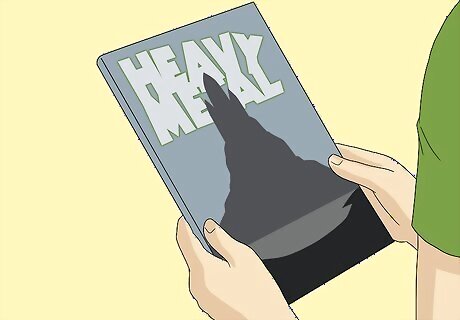
views

Know the difference in "standard" comic book sizes. The earliest comic books of the Golden Age contained 64 pages, enough to support 4 or 5 adventures within their covers. As the cost of paper gradually increased, the number of pages was reduced to 48, which accommodated up to 3 graphic stories, and then to 32, which usually meant a maximum of 2 stories. Also, while comic books consistently kept a height of 10 1/2 inches (26.7 cm), their width narrowed from the Golden Age dimension of 7 3/4 inches (19.7 cm) to a Silver Age width of 7 1/8 inches (18.1 cm), then widened to 7 1/4 inches (18.4 cm) in the 1970s and 1980s before narrowing to 6 7/8 inches (17.5 cm) in the 1990s. Bags for regular comics are thus broken into the following sizes: Golden Age: 7 3/4 x 10 1/2 inches (19.7 x 26.7 cm). This size accommodates Golden Age comics from 1943 up to Silver Age comics published in 1960. Silver Age: 7 1/8 x 10 1/2 inches (18.1 x 26.7 cm). This size accommodates some late Golden Age comics published in 1951 as well as Silver Age comics published as late as 1965, including annuals and 80-page giants published during that period. Regular: 7 1/4 x 10 1/2 inches (18.4 x 26.7 cm). This size accommodates comics published after 1965, including the late Silver Age and Bronze Age comics of the 1970s to mid-1980s. Current: 6 7/8 x 10 1/2 inches (17.5 x 26.7 cm). This size accommodates comics published since 1990. As there is some overlap in years in the above list, be sure to measure your comics horizontally and vertically before purchasing bags and boards for them.

Note that some comic books have been published in magazine format. Although most comic book series have been published in 1 of the sizes described above, some comics have been published in larger magazine formats, particularly from the late 1960s into the early 1980s. Bags and boards are available for these magazine comics in these sizes: Magazine: 8 1/2 x 11 inches (21.7 x 27.9 cm). This size will accommodate Warren Comics titles such as "Creepy," "Eerie," and "Vampirella," and Curtis' black-and-white adaptations of Marvel titles such as "Conan, the Barbarian" and "The Rampaging Hulk," as well as issues of Mad Magazine. Thick Magazine: 8 3/4 x 11 inches (22.2 x 27.9 cm). This size will accommodate the color comic "Heavy Metal" as well as issues of "Playboy" and other men's magazines.

Get larger bags and boards still for treasury-sized comics. Treasury comics are larger than magazine-sized comics used for reprints, such as DC Comics Famous First Edition reprints of the Golden Age comics featuring first appearances of its major characters, Christmas story reprint anthologies from both DC and Marvel, and special issues such as DC's "Superman vs. Muhammad Ali." Treasury sized bags and boards measure 10 5/8 inches ( cm) across by 13 1/2 inches ( cm) high.

Choose the form of plastic that best meets your needs. Comic book preservation supplies are available from your local comic shop or from an Internet retailer. Comic book bags are made of any of several kinds of plastic: polypropylene, polyethylene, and Mylar. Polypropylene and polyethylene run cheaper than Mylar, but typically must be replaced every 3 to 5 years, along with the backing board, so the comic remains preserved. Mylar, in contrast, does not need to be replaced as often, but not all dealers carry Mylar bags in all sizes.














Comments
0 comment